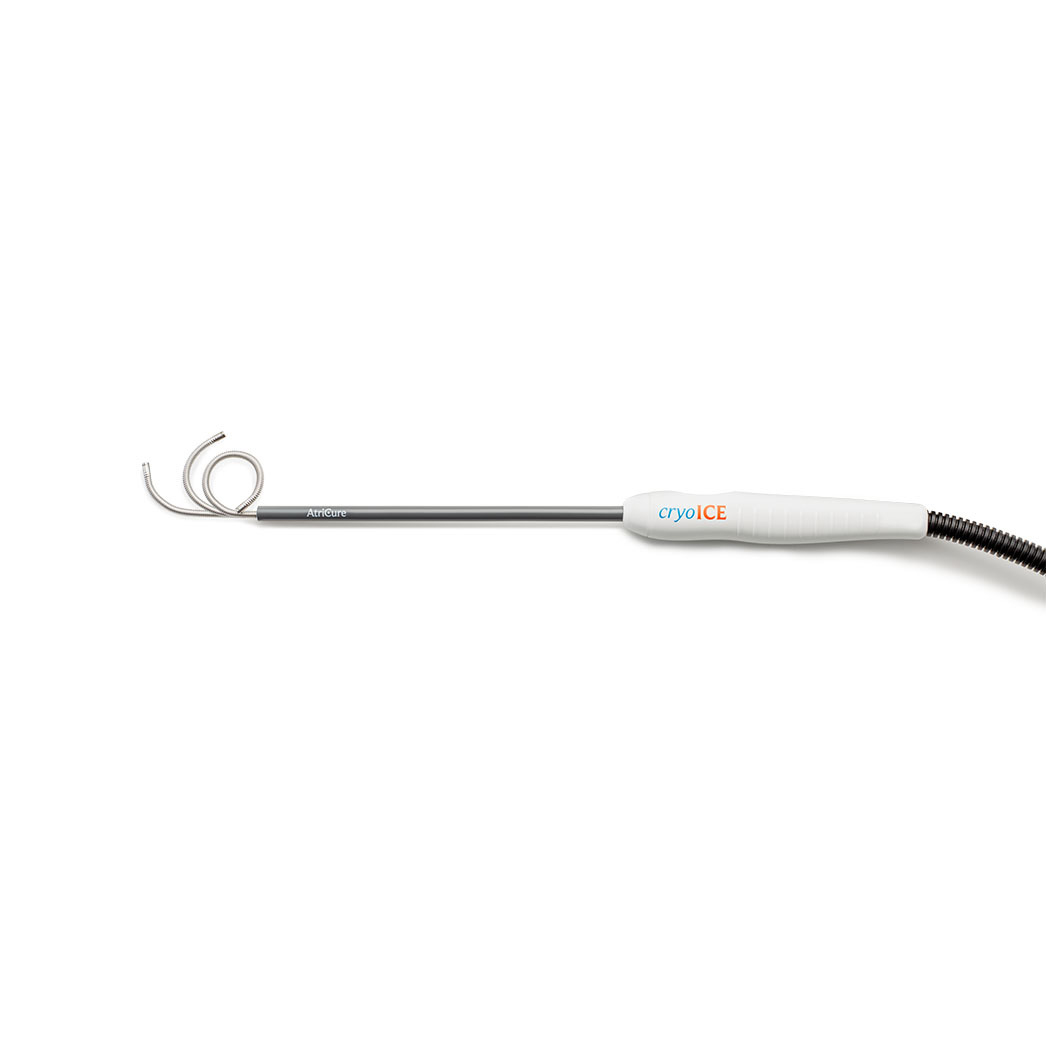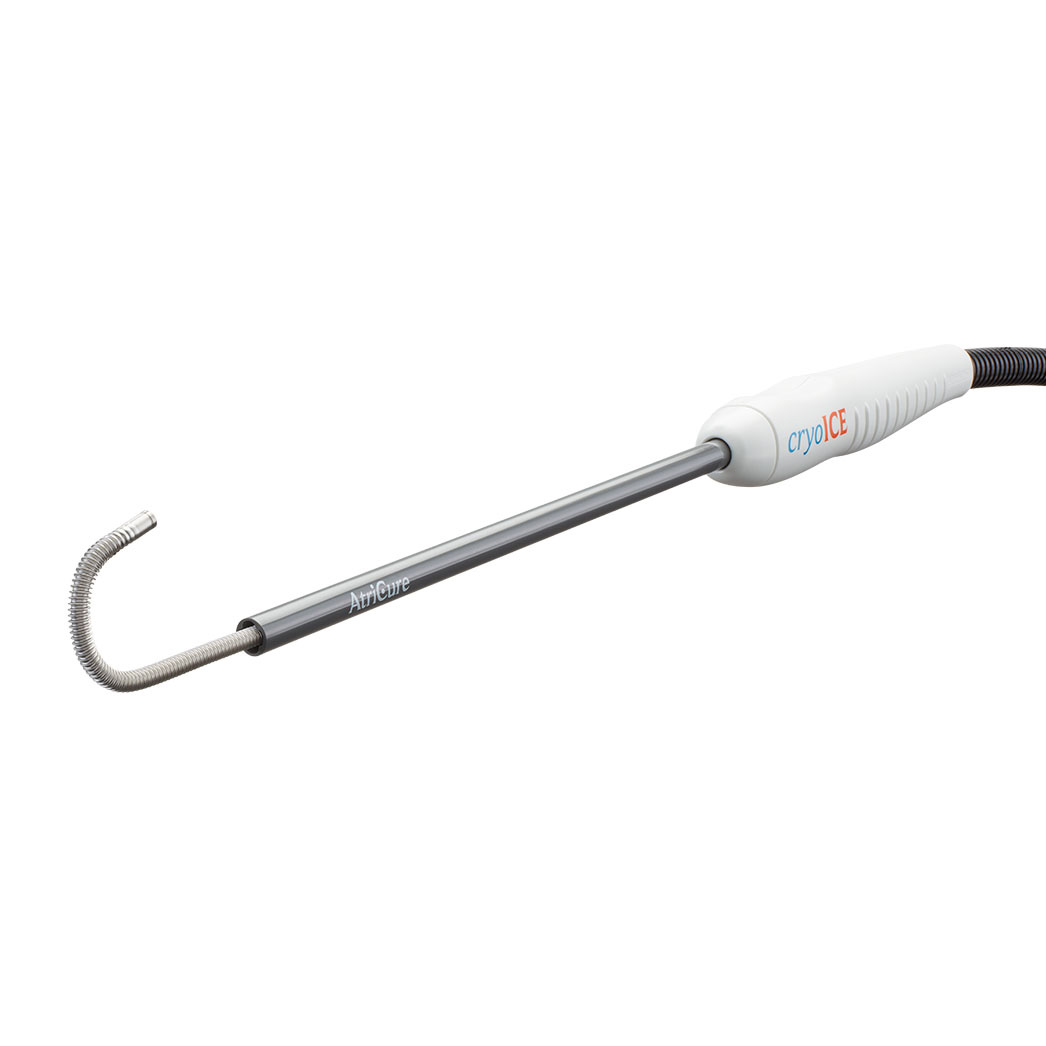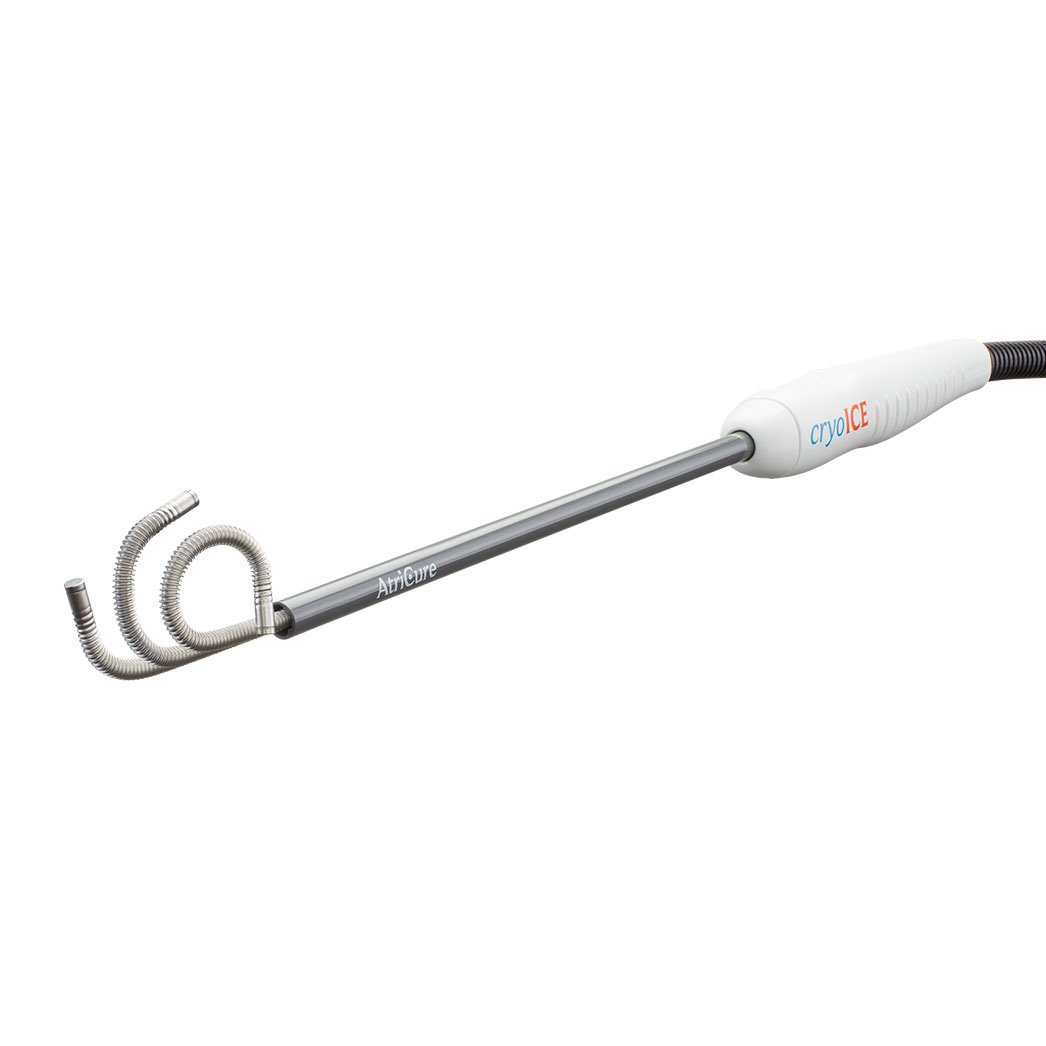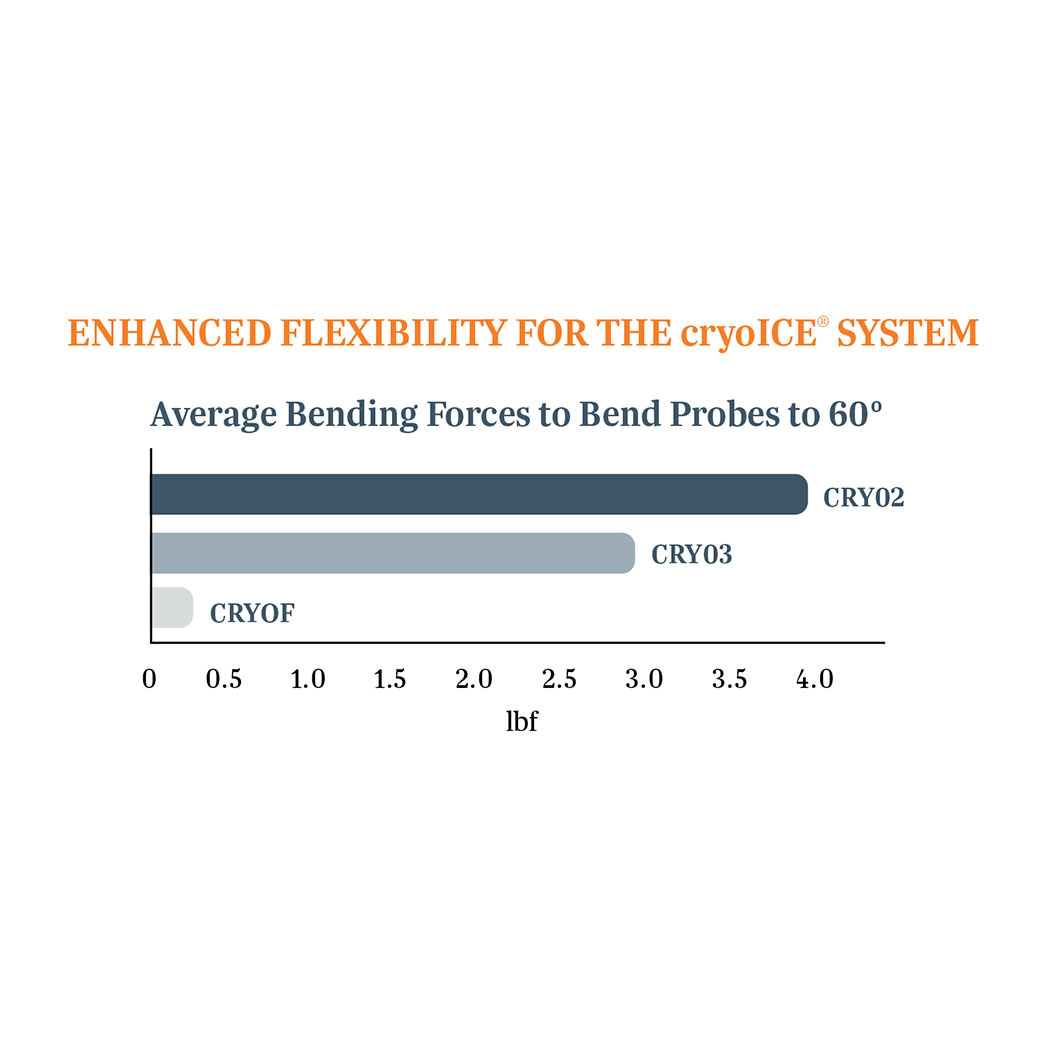- Healthcare Professionals
- Patients & Caregivers
- About AtriCure
cryoFORM Cryoablation Probe
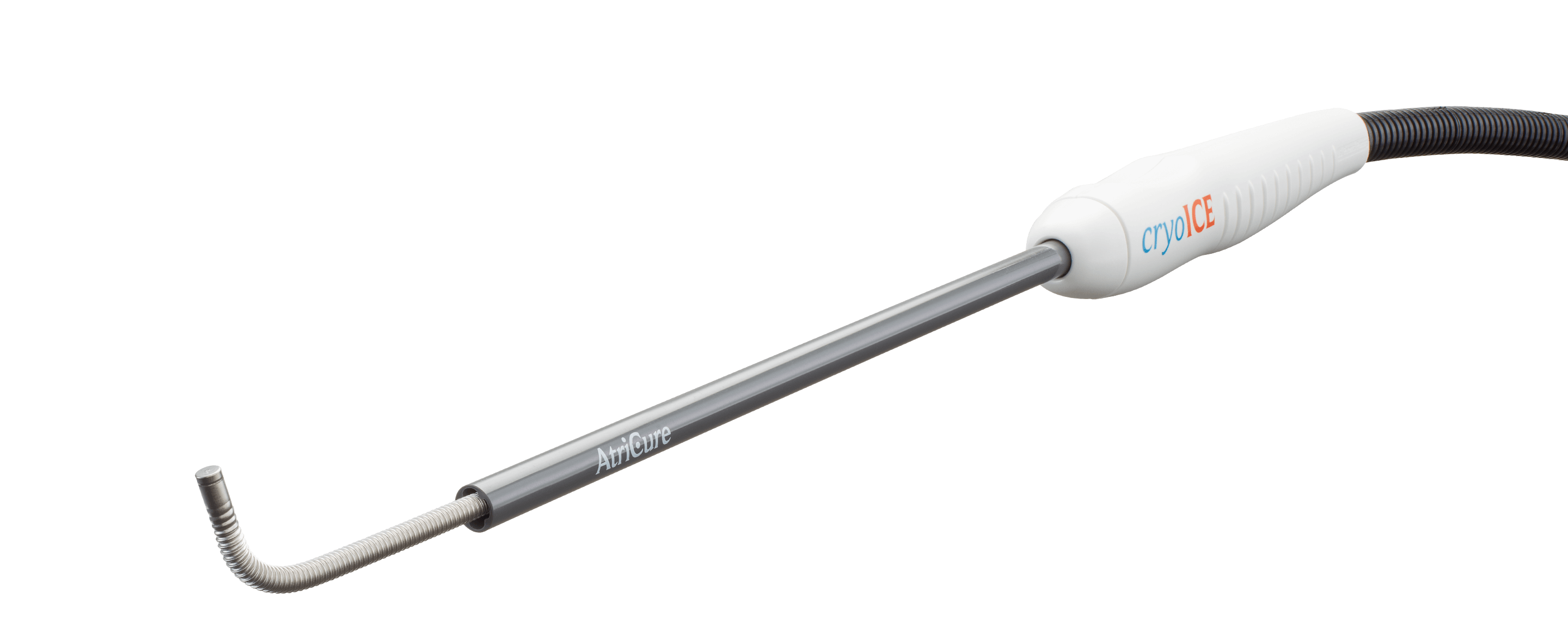
cryoFORM Quick Facts
- Increased probe flexibility to adapt to a variety of surgical ablation procedures
- Intended to address the trend towards more minimally invasive techniques by allowing surgeons to easily shape and position the probe using endoscopic instruments
- Corrugated 10 cm malleable stainless steel probe
- Retractable handle exposes active probe lengt
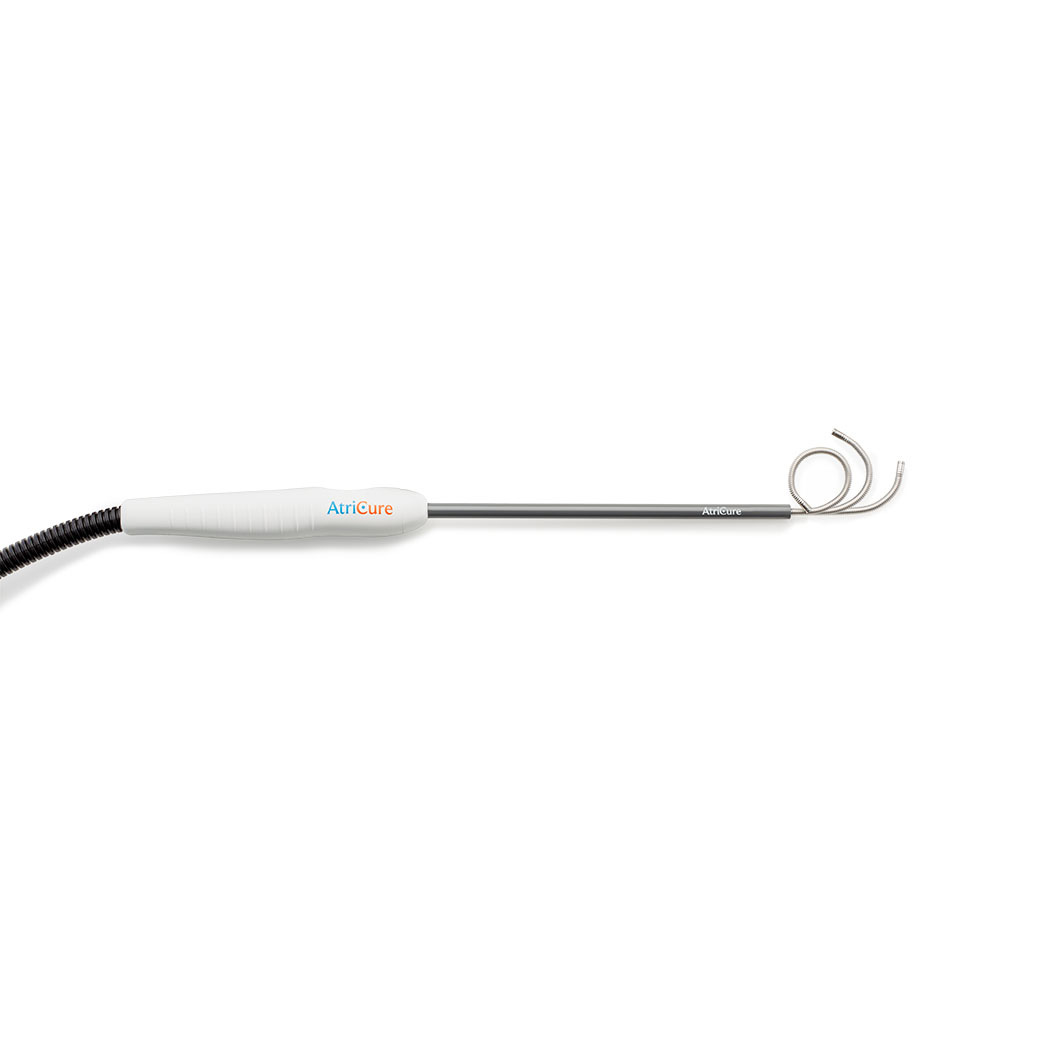
cryoFORM Quick Facts
- Increased probe flexibility to adapt to a variety of surgical ablation procedures
- Intended to address the trend towards more minimally invasive techniques by allowing surgeons to easily shape and position the probe using endoscopic instruments
- Corrugated 10 cm malleable stainless steel probe
- Retractable handle exposes active probe lengt
The cryoFORM probe builds off of AtriCure’s core strengths in cryoablation technology, leveraging such features as thermal capacity to remove heat and Active Defrost, which allows the probe to be safely and quickly detach while maintaining the tissue’s frozen state.
cryoFORM Quick Facts:
- Increased probe flexibility to adapt to a variety of surgical ablation procedures
- Intended to address the trend towards more minimally invasive techniques by allowing surgeons to easily shape and position the probe using endoscopic instruments
- Corrugated 10 cm malleable stainless steel probe
- Retractable handle exposes active probe length
- Flexible tube set allows for tight bending radius
- Ergonomic handle accommodates to multiple hand positions
- Active Defrost feature allows probe to be removed from surface keeping tissue in frozen state
Why cryoICE with Nitrous Oxide?
Removes Heat Faster1 / Stays Frozen Longer
1 / Fast Performance
cryoICE is quick to achieve lethal temperatures and maintains that temperature consistently along the probe length. The probe / tissue surface temperature is actively measured through a thermocouple feature.
2 / Superior Science
cryoICE has superior work capacity. Nitrous Oxide (N2O) has a higher heat absorption capacity than Argon.2
3 / Innovative Ergonomics
cryoICE has a retractable handle to expose the active probe length. In addition, its flexible tube set allows for a tight bending radius, and the ergonomic handle can adjust to multiple hand positions.
4 / Active Defrost
Active Defrost allows the probe to be quickly detached maintaining the tissue’s frozen state.
"Slow thawing of the frozen tissue is a prime destructive factor and is a more important mechanism of cell death in cryosurgery than is rapid cooling. The rate of thawing should be as slow as practical, and is best done by allowing the tissues to thaw with no assistance by heating. Rapid thawing increases the chance of cell survival, which has long been known in the treatment of frostbite."3
| Product Code(s): |
|---|
CRYOF |
The cryoFORM probe builds off of AtriCure’s core strengths in cryoablation technology, leveraging such features as thermal capacity to remove heat and Active Defrost, which allows the probe to be safely and quickly detach while maintaining the tissue’s frozen state.
cryoFORM Quick Facts:
- Increased probe flexibility to adapt to a variety of surgical ablation procedures
- Intended to address the trend towards more minimally invasive techniques by allowing surgeons to easily shape and position the probe using endoscopic instruments
- Corrugated 10 cm malleable stainless steel probe
- Retractable handle exposes active probe length
- Flexible tube set allows for tight bending radius
- Ergonomic handle accommodates to multiple hand positions
- Active Defrost feature allows probe to be removed from surface keeping tissue in frozen state
Why cryoICE with Nitrous Oxide?
Removes Heat Faster1 / Stays Frozen Longer
1 / Fast Performance
cryoICE is quick to achieve lethal temperatures and maintains that temperature consistently along the probe length. The probe / tissue surface temperature is actively measured through a thermocouple feature.
2 / Superior Science
cryoICE has superior work capacity. Nitrous Oxide (N2O) has a higher heat absorption capacity than Argon.2
3 / Innovative Ergonomics
cryoICE has a retractable handle to expose the active probe length. In addition, its flexible tube set allows for a tight bending radius, and the ergonomic handle can adjust to multiple hand positions.
4 / Active Defrost
Active Defrost allows the probe to be quickly detached maintaining the tissue’s frozen state.
"Slow thawing of the frozen tissue is a prime destructive factor and is a more important mechanism of cell death in cryosurgery than is rapid cooling. The rate of thawing should be as slow as practical, and is best done by allowing the tissues to thaw with no assistance by heating. Rapid thawing increases the chance of cell survival, which has long been known in the treatment of frostbite."3
| Product Code(s): |
|---|
CRYOF |
Indication (Argentina, Australia, Brazil, Canada, Chile, Colombia, EU Region, Hong Kong, Israel, Korea, Kuwait, New Zealand, Serbia, Saudi Arabia, Singapore, South Africa, Taiwan, UAE, UK)
The cryoICE cryoFORM cryoablation probe is indicated for use in the cryosurgical treatment of cardiac arrhythmias by freezing target tissues, creating an inflammatory response (cryonecrosis) that blocks the electrical conduction pathway.
Indication (Japan)
This device is a surgical system intended for achieving coagulation of targeted cardiac tissues by contact (indirect contact to cryogen) to tip of probe (frozen tip) refrigerated by cryogen.
Page References
- Data on file. Bench test results may not necessarily be indicative of clinical performance.
- Lemmon, E.W. “REFROP, Reference Thermodynamic and Transport Properties,” NIST Standard Reference Database 23, Version 8.0. NIST, 2007. Print.
- Baust, J.G. and Gage, A.A. (2005), The molecular basis of cryosurgery, BJU International, 95:1187-1191, doc 10.1111/j.1464-410X.2005.05502.
PM-INTL-2670B-0927-G

© 2026 Atricure, Inc. All Rights Reserved.

The information on this page is intended for Healthcare Professionals. If you are a Patient or a Caregiver, please visit the 'Patients and Caregivers' page.
Click "Agree" to confirm you are a Healthcare Professional.
The information on this page is intended for Healthcare Professionals. If you are a Patient or a Caregiver, please visit the 'Patients and Caregivers' page.
Click "Agree" to confirm you are a Healthcare Professional.
The information on this page is intended for Patients and Caregivers. If you are a Healthcare Professional, please visit the 'Healthcare Professionals' page.
Click "Agree" to confirm you are a Patient or a Caregiver.
You are leaving the AtriCure Asia Pacific site
You are leaving the Asia Pacific site of AtriCure.com and entering an AtriCure site intended for users in USA.
You are leaving the AtriCure Asia Pacific site
You are leaving the Asia Pacific site of AtriCure.com and entering an AtriCure site intended for users in Canada, Central & South America.
You are leaving the AtriCure Asia Pacific site
You are leaving the Asia Pacific site of AtriCure.com and entering an AtriCure site intended for users in Europe & Middle East.
You are leaving the AtriCure Europe & Middle East site
You are leaving the Europe & Middle East site of AtriCure.com and entering an AtriCure site intended for users in USA.
You are leaving the AtriCure Europe & Middle East site
You are leaving the Europe & Middle East site of AtriCure.com and entering an AtriCure site intended for users in Canada, Central & South America.
You are leaving the AtriCure Europe & Middle East site
You are leaving the Europe & Middle East site of AtriCure.com and entering an AtriCure site intended for users in Asia Pacific.
You are leaving the AtriCure Canada, Central & South America site
You are leaving the Canada, Central & South America site of AtriCure.com and entering an AtriCure site intended for users in USA.
You are leaving the AtriCure Canada, Central & South America site
You are leaving the Canada, Central & South America site of AtriCure.com and entering an AtriCure site intended for users in Asia Pacific.
You are leaving the AtriCure Canada, Central & South America site
You are leaving the Canada, Central & South America site of AtriCure.com and entering an AtriCure site intended for users in Europe & Middle East.
